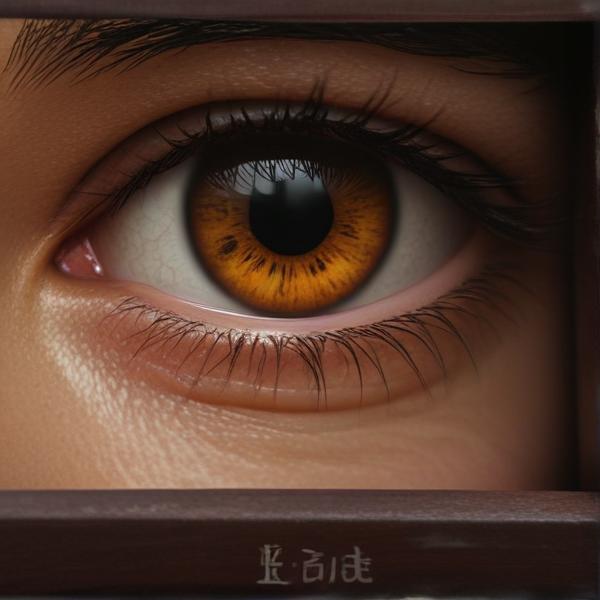基本信息 (Basic Information)
含义与用法 (Meanings & Usage)
中文核心释义 (Core Chinese Meaning): 睡觉,入睡。
英文核心释义 (Core English Meaning): to sleep; to slumber
象形意义 / 为何这么写 (Pictographic Meaning / Writing Rationale)
文言文释义 (Classical Chinese Meaning)
与现代意义相近,主要指闭眼入睡。Similar to modern meaning, mainly referring to closing the eyes to sleep.
深入学习 (In-depth Study)
字源故事 (Origin Story)
字形演变 (Character Evolution)
常用词语和例句 (Common Words & Examples)
失眠 (insomnia)
昨晚我失眠了,很难入睡。
Eng: I had insomnia last night and found it hard to fall asleep.
睡眠 (sleep)
充足的睡眠有助于健康。
Eng: Sufficient sleep is beneficial to health.
安眠 (peaceful sleep)
音乐有助于安眠。
Eng: Music helps with peaceful sleep.
相关成语 (Related Idioms)
安然入眠
Meaning: to fall asleep peacefully
多语言翻译 (核心释义) (Translations (Core Meaning))
- French: dormir
- German: schlafen
- Spanish: dormir
- Italian: dormire
- Portuguese: dormir
- Russian: спать
- Arabic: ينام
- Persian: خوابیدن
- Dutch: slapen
- Polish: spać
- Vietnamese: ngủ
- Ukrainian: спати
视频学习资源 (Video Learning Resources)
通过以下链接在热门视频网站搜索 "眠" 的更多讲解:
Search for more explanations of "眠" on popular video sites:
- 在 Bilibili.com 搜索 "眠 字源 说文解字" (Search on Bilibili)
- 在 YouTube.com 搜索 "眠 character origin etymology" (Search on YouTube)
网络参考 (Web References for "眠") ()
网络内容摘要 (Web Content Summary):
```html眠(mián),是汉语常用字,意思是“闭上眼睛,引申为睡觉”。 眠 (mián) is a commonly used Chinese character, meaning "to close one's eyes" and, by extension, "to sleep".
"眠" 是形声字,最早由"瞑"演变而来。"瞑"的本意是双目紧闭,古代常用来描述死者或熟睡时闭眼的状态。"眠"字后采用“民”为声旁。 "眠" is a phono-semantic compound character, derived from the older form "瞑". The original meaning referred to eyes tightly closed, often describing the state of the dead or someone in deep sleep. Later, "眠" adopted "民" as its phonetic component.
文化上,“眠”与睡眠相关,在汉语里用法也很广泛。 Culturally, "眠" is associated with sleep and is widely used in Mandarin.
- 常见词语: 失眠(insomnia)、眠床(bed)、长眠(eternal sleep, euphemism for death)、安眠药(sleeping pills)。 Common words: 失眠 (insomnia), 眠床 (bed), 长眠 (eternal sleep, euphemism for death), 安眠药 (sleeping pills).
- 易混淆点: “眠” 和 “瞑” 意义相近,但“瞑”常有闭目不语、平静安详的意味,书面语用得更多。 Common confusion: "眠" and "瞑" have similar meanings, but "瞑" is more literary and can also mean "to close one's eyes and remain silent or peaceful".
成语或词组举例: 安然入眠(go to sleep peacefully)、夜不能眠(unable to sleep at night)。 Idioms/phrases: 安然入眠 (go to sleep peacefully), 夜不能眠 (unable to sleep at night).
```眠(汉语汉字)_百度百科
眠,汉语一级字,读作眠(mián),"眠"是会意兼形声字。本字为"瞑"。小篆从目,从冥(表示昏暗),冥兼表声。异体作"眠",改为"民"声。本义为闭上眼睛,引申指睡觉。
汉字"眠"的起源、演变过程-汉字字源辞典
眠 "是" 瞑 "的替代字。 冥 ,既是声旁也是形旁,表示阴宅、阴间。 瞑 ,金文 (目,眼睛) (冥,阴间),表示遗体双目冥闭,幽秘沉静。 篆文 将金文字形中的"目" 写成 ,将金文字形中的" 大 " (人)写成 " 六" (庐,屋)。 " 瞑 "表示死者紧闭的双目,也借以表示活人深睡的 ...
更多图片 (眠 More Images) ()
